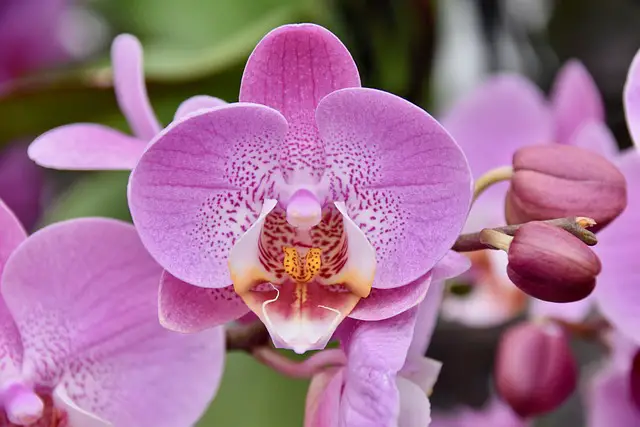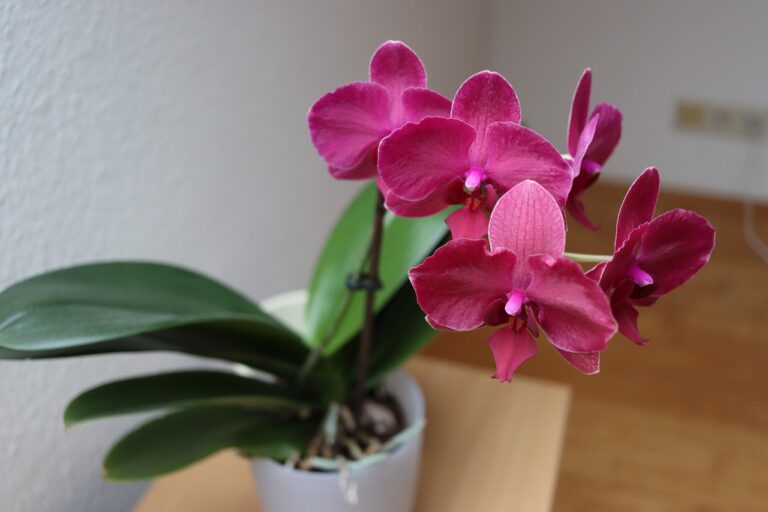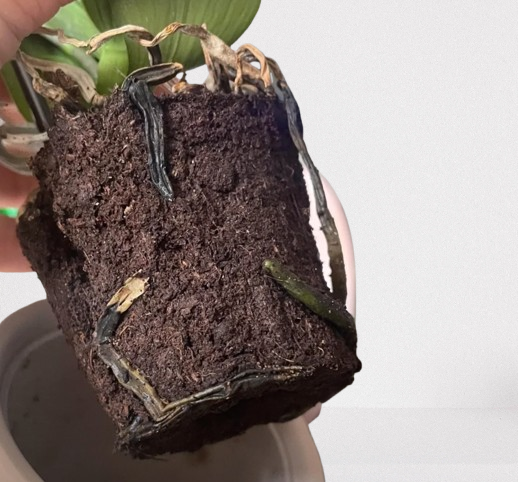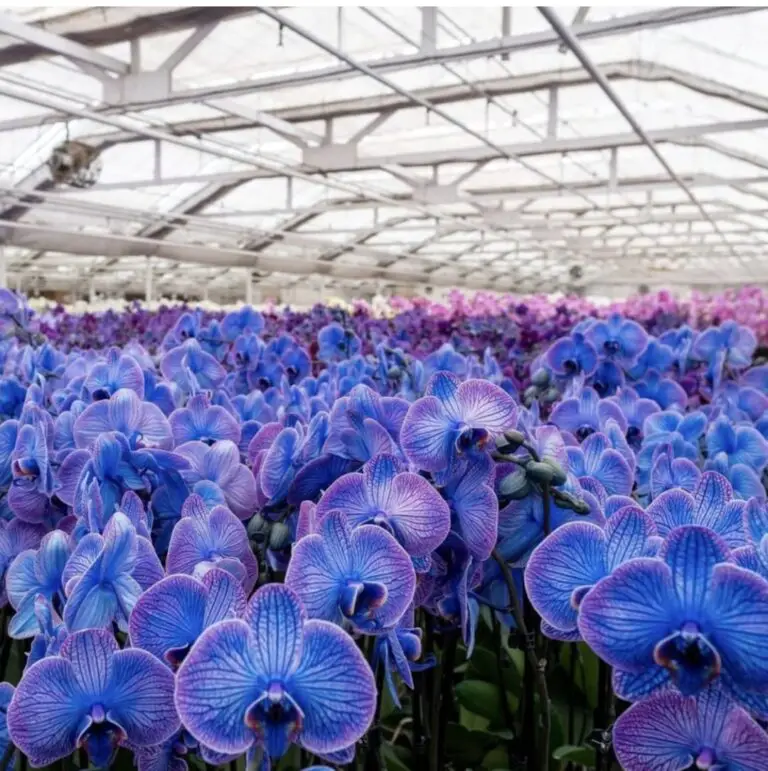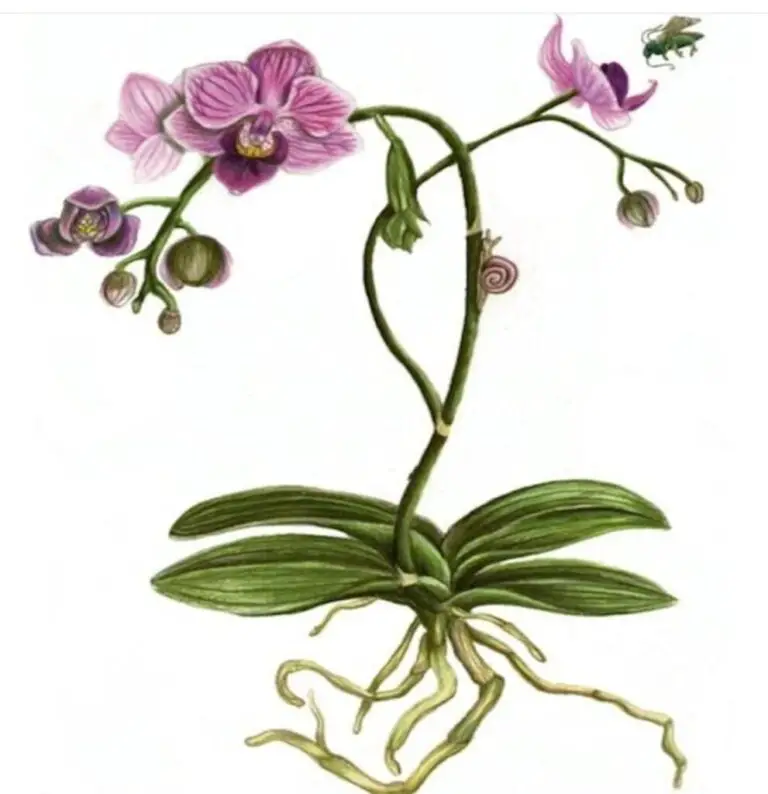The Blue Orchid Flower is one of the most mesmerizing and exotic plants you can grow, known for its rare and vibrant color that instantly adds elegance to any indoor garden. While it may look delicate, this striking bloom is surprisingly manageable with the right care. Whether you’re a first-time orchid owner or an experienced grower looking to perfect your technique, understanding how to properly care for a blue orchid is key to ensuring long-lasting beauty and healthy blooms.
Unlike traditional houseplants, blue orchids have specific needs when it comes to light, water, humidity, and feeding. Small missteps—like overwatering or exposing the plant to direct sun—can lead to wilting leaves, failed blooms, or worse, a dying plant. On the other hand, consistent care and attention to its unique environment can lead to months of stunning flowers and vibrant growth.
In this comprehensive guide, we’ll walk you through 20 essential care tips, including the top 10 do’s and don’ts to help prevent common mistakes, followed by 10 practical fixes for the most frequent problems orchid growers face. These tips are easy to follow, even for beginners, and will equip you with the knowledge to confidently grow and maintain a thriving Blue Orchid Flower.
- 1 🟩 Part 1: 10 Essential Do’s and Don’ts for Blue Orchid Flowers
- 2 🔹 Do’s
- 3 1. Do Choose the Right Potting Medium
- 4 2. Do Provide Bright, Indirect Light
- 5 3. Do Water with Care Orchids are sensitive to overwatering.
- 6 4. Do Use Orchid-Specific Fertilizer
- 7 5. Do Maintain Proper Humidity
- 8 🔸 Don’ts
- 9 6. Don’t Overwater
- 10 7. Don’t Expose to Direct Sunlight
- 11 8. Don’t Use Tap Water with High Minerals
- 12 9. Don’t Let Water Sit in the Crown
- 13 10. Don’t Repot Too Often
- 14 🟦 Part 2: 10 Common Problems and How to Fix Them
- 15 1. Yellowing Leaves
- 16 2. Orchid Not Blooming
- 17 3. Mushy or Black Roots
- 18 4. Wilting Leaves
- 19 5. Leaf Spots or Fungal Growth
- 20 6. Drooping Flower Spikes
- 21 7. Pests (Mealybugs, Aphids, etc.)
- 22 8. White Crust on Leaves or Roots
- 23 9. Bud Blast (Buds Dropping Before Blooming)
- 24 10. Stunted Growth
- 25 FAQs About Blue Orchid Flower
🟩 Part 1: 10 Essential Do’s and Don’ts for Blue Orchid Flowers
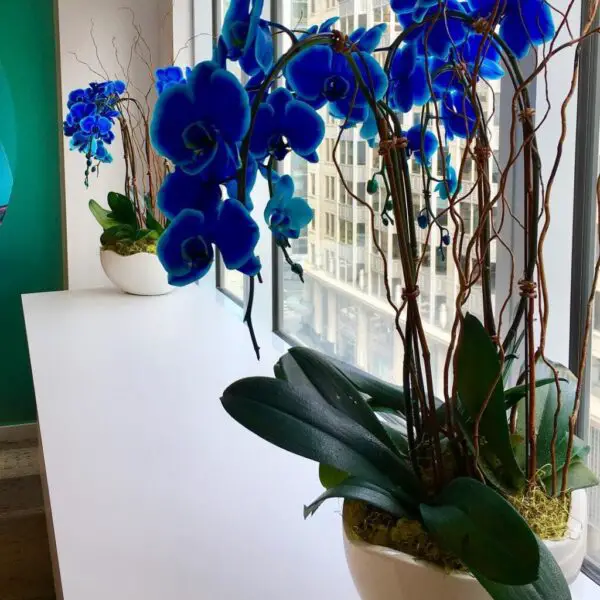
🔹 Do’s
1. Do Choose the Right Potting Medium
For healthy roots, blue orchids require potting mix that drains properly.Use bark chips, sphagnum moss, or a commercial orchid mix instead of regular soil, which retains too much moisture and can lead to root rot. A breathable pot and proper medium are critical for airflow and drainage.
2. Do Provide Bright, Indirect Light
Orchids thrive in bright but filtered light, similar to what they’d receive under a forest canopy in nature. Place your blue orchid near an east-facing window or use sheer curtains to diffuse direct sunlight. Too much light will burn the leaves, while too little light hinders blooming.
3. Do Water with Care
Orchids are sensitive to overwatering.
In between waterings, allow the potting medium to dry slightly.A good rule is to water once a week, but this may vary depending on humidity and temperature. Always check the roots—healthy orchid roots should be silvery green when dry and bright green when hydrated.
4. Do Use Orchid-Specific Fertilizer
During the active growing season (spring and summer), fertilise your orchid once a month using a balanced fertiliser designed specifically for orchids. While too little fertiliser may cause blossoming to be slowed down, too much might harm roots. For consistent, healthy development and to prevent overfeeding, dilute the fertiliser to half strength.
5. Do Maintain Proper Humidity
Blue orchids prefer a humid environment, ideally between 50% and 70%. If your home is dry, consider placing a humidity tray nearby, misting the plant occasionally, or using a humidifier. Just make sure water doesn’t collect on the leaves or crown, as this can lead to rot and disease.
🔸 Don’ts
6. Don’t Overwater
When it comes to orchids, one of the most frequent mistakes is overwatering. It causes the roots to become moist, which can suffocate the plant and result in root rot. Never water without first feeling the potting mix. A few more days should pass if it’s still moist. For roots to remain healthy, proper drainage is essential.
7. Don’t Expose to Direct Sunlight
Direct sun can cause leaf scorch, turning your orchid’s leaves yellow or brown. Avoid placing your orchid in west-facing windows without protection. Instead, provide filtered sunlight. If you’re using artificial grow lights, place them at the right distance to avoid overheating or drying out the plant.
8. Don’t Use Tap Water with High Minerals
Hard tap water can leave mineral deposits on the roots and leaves, affecting your orchid’s health.Instead, use reverse osmosis water, distilled water, or rainfall. If tap water is your only option, let it sit overnight before using to allow chlorine to dissipate and reduce its impact.
9. Don’t Let Water Sit in the Crown
When watering, avoid pouring water into the center of the plant (called the crown). Water sitting here can cause crown rot, a deadly fungal issue for orchids. Always water around the base or soak the pot from below to ensure even moisture without water collecting in sensitive areas.
10. Don’t Repot Too Often
Orchids don’t like being disturbed frequently. Only repot when absolutely necessary—typically every 1 to 2 years or when the potting mix breaks down or roots overflow. Repotting too often can stress the plant and interrupt blooming. Use fresh orchid mix and be gentle when repotting.
🟦 Part 2: 10 Common Problems and How to Fix Them
1. Yellowing Leaves
Yellow leaves typically signal a lighting or irrigation issue. Leaves can deteriorate and fall off due to either too much water or too little light. Make sure the plant receives bright, indirect light and modify your watering schedule accordingly. As fresh leaves emerge, older ones may naturally turn yellow.
2. Orchid Not Blooming
If your orchid isn’t blooming, it might not be getting enough light or the right temperature cues. In order to initiate flowering, orchids frequently require a small dip in temperature at night. Ensure proper light exposure, feed regularly during the growing season, and mimic natural conditions to encourage blooms.
3. Mushy or Black Roots
Soft, black roots are a sign of root rot, typically caused by overwatering or poor drainage. Remove the plant from its pot, trim the dead roots, and repot it in fresh, airy orchid mix. Make sure the pot has drainage holes and that the roots can dry out properly.
4. Wilting Leaves
Both underwatering and overwatering can cause wilting. If the potting mix is very dry, give your orchid plenty of water. Reduce watering and check for rot in the roots if it’s damp. Additionally, abrupt temperature fluctuations and other environmental stressors can cause leaves to momentarily droop.
5. Leaf Spots or Fungal Growth
Brown or black spots on leaves often point to fungal infections, usually due to poor air circulation or excess moisture. Improve airflow around the plant and avoid misting directly on the leaves. Remove affected leaves and treat with a gentle fungicide suitable for orchids.
6. Drooping Flower Spikes
The plant may require additional light or assistance if your bloom spike is drooping. Use a twist tie or clip to gently stake the spike. Additionally, make sure it’s not too damp or too dry, as these conditions can weaken the stem. Strong spikes will stand tall and yield blooms that last longer.
7. Pests (Mealybugs, Aphids, etc.)
Orchids are sometimes attacked by pests like mealybugs, scale, or aphids. Look for sticky residue, cottony spots, or visible bugs. Wipe them off with a damp cloth, use neem oil or insecticidal soap, and isolate the plant if needed to prevent spreading to others nearby.
8. White Crust on Leaves or Roots
Usually, too much fertiliser or mineral residue from hard water causes this white accumulation. Flush the potting medium with distilled water every few months to remedy it. Gently wipe the leaves with a moist towel. This problem can be avoided by using clean water and fertilising properly.
9. Bud Blast (Buds Dropping Before Blooming)
Sudden changes in environment—like drafts, low humidity, or moving the plant—can cause bud blast. Make sure your orchid stays in a stable location with good humidity and no sudden temperature drops. Once buds fall off, be patient and continue care until the plant is ready to bloom again.
10. Stunted Growth
Lack of nutrients, low light, or compacted roots can cause slow or stunted growth. Fertilize regularly with a balanced orchid feed, ensure adequate light, and repot if the plant seems root-bound. Once you correct the underlying issue, your orchid should resume healthy growth.
Final thoughts
Caring for a Blue Orchid Flower becomes easy with the right tips. By following these 20 expert do’s, don’ts, and fixes, you’ll ensure vibrant blooms and healthy growth. With proper watering, light, and troubleshooting, your Blue Orchid Flower will thrive beautifully and brighten your space for months to come.
FAQs About Blue Orchid Flower
1. What is a Blue Orchid Flower?
The Blue Orchid Flower is a stunning and exotic-looking bloom, often admired for its vivid, vibrant blue petals. Although real blue orchids are uncommon in the wild, many of the ones that are sold in stores are actually blue-dyed white orchids.. Still, the Blue Orchid Flower adds unique beauty to any indoor garden.
2. How do I care for a Blue Orchid Flower?
To care for a Blue Orchid Flower, provide it with indirect sunlight, high humidity, and proper watering. Refrain from overwatering since this can lead to root rot.Use orchid-specific fertilizers monthly. With the right care, your Blue Orchid Flower can thrive and bloom beautifully throughout the growing season.
3. Is the Blue Orchid Flower naturally blue?
In most cases, the Blue Orchid Flower is not naturally blue. Most are white Phalaenopsis orchids that have been dyed with a blue pigment. In nature, true blue orchids are incredibly uncommon.However, the dyed version still captivates plant lovers with its striking color.
4. How often should I water my Blue Orchid Flower?
When the top inch of the potting medium seems dry, water your blue orchid flower once a week. To keep water from pooling at the roots, make sure the pot has adequate drainage. Watering your blue orchid flower properly keeps it healthy and vibrant.
5. What type of potting mix is best for Blue Orchid Flower?
The Blue Orchid Flower grows best in a well-draining orchid mix, typically made of bark, perlite, and charcoal. This promotes healthy growth by preventing excessive moisture and allowing airflow to the roots.A quality orchid mix is essential for a thriving Blue Orchid Flower.
6. Can I repot a Blue Orchid Flower?
Yes, you can repot a Blue Orchid Flower every 1-2 years or when it outgrows its container. Repotting helps refresh the growing medium and prevent root rot. Use a clear orchid pot and fresh orchid mix to ensure your Blue Orchid Flower continues to flourish.
7. Why are the leaves of my Blue Orchid Flower turning yellow?
.
A blue orchid flower’s yellow leaves may be a sign of inadequate light, overwatering, or nutrient deficiencies.Evaluate the plant’s care conditions and make adjustments. Healthy green leaves are essential for photosynthesis and overall health, so keeping your Blue Orchid Flower well-maintained is crucial.
8. Will a Blue Orchid Flower bloom again?
With the right care, a blue orchid flower can indeed rebloom. Wait patiently, continue caring for the plant, then clip the spike just above a node once the flowers have fallen.With enough light, humidity, and regular feeding, your Blue Orchid Flower can reward you with fresh blooms.
9. How do I increase humidity for my Blue Orchid Flower?
To increase humidity for a Blue Orchid Flower, use a humidity tray, mist the leaves regularly, or place a humidifier nearby. Orchids enjoy 50–70% humidity. Maintaining the right environment helps your Blue Orchid Flower stay healthy and produce longer-lasting blooms.
10. Can I grow a Blue Orchid Flower outdoors?
You can grow a Blue Orchid Flower outdoors in tropical or subtropical climates with indirect sunlight and proper humidity. It is, however, better maintained indoors in colder climates. Outdoor placement must avoid direct sunlight and strong winds to protect the delicate Blue Orchid Flower.
11. How long do the blooms of a Blue Orchid Flower last?
The blooms of a Blue Orchid Flower typically last between 6 to 12 weeks with proper care. Factors such as temperature, humidity, and watering practices all influence bloom longevity. By maintaining optimal conditions, you can enjoy the beautiful display of your Blue Orchid Flower longer.
12. What kind of fertilizer is best for a Blue Orchid Flower?
Use a balanced orchid fertilizer, like 20-20-20, diluted to half strength, once a month for your Blue Orchid Flower. Fertilizing promotes strong root growth and vibrant blooms. Avoid overfeeding, as this can damage roots and reduce the flowering potential of your Blue Orchid Flower.
13. Is the Blue Orchid Flower safe for pets?
The Blue Orchid Flower, like most orchids, is generally non-toxic to cats and dogs. However, ingestion may cause mild stomach upset. It’s best to keep your Blue Orchid Flower out of reach of curious pets to avoid potential damage to the plant or pet.
14. Can I propagate a Blue Orchid Flower at home?
Yes, you can propagate a Blue Orchid Flower using keikis, which are baby orchids that form on the flower spike. Once the keiki develops roots, it can be removed and potted separately. A satisfying method of growing your collection of blue orchid flowers is through propagation.
15. Why is my Blue Orchid Flower losing its color?
If your Blue Orchid Flower starts losing its blue color, it may be a dyed variety reverting to white after blooming. This is common with store-bought dyed orchids. Despite the color change, the plant remains healthy and can still thrive with the right Blue Orchid Flower care.

